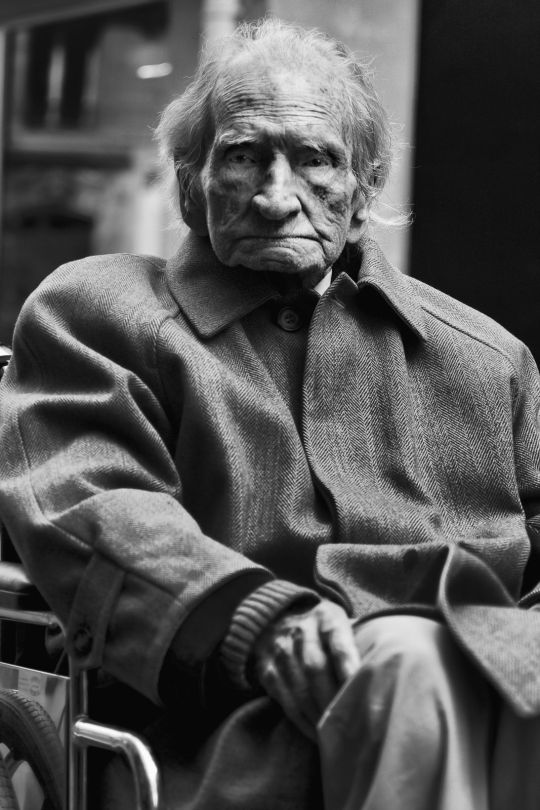#Albert Cossery
Text
I only know two things: first, the world has been taken over by a bunch of bastards and murderers, and second, we shouldn't take it seriously because that's what they want.
The Jokers by Albert Cossery
7 notes
·
View notes
Text
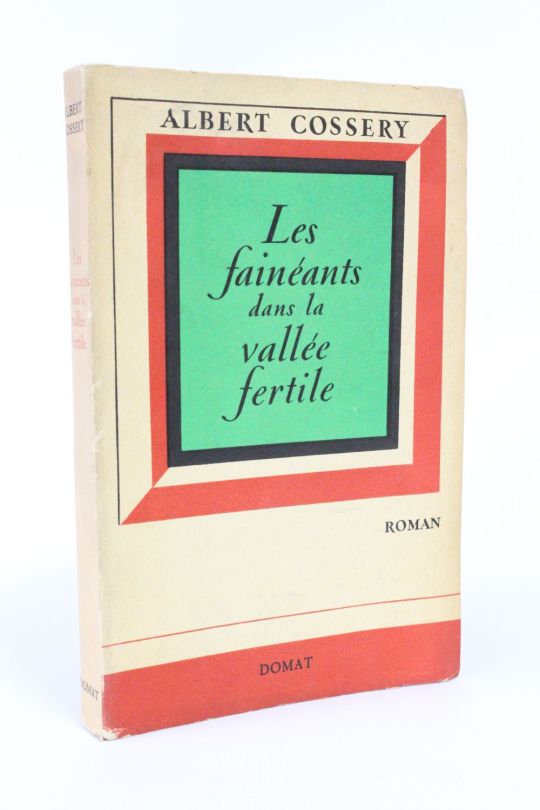
Cossery Albert
Les Faineants dans la vallee-fertile, 1948
Edition originale
4 notes
·
View notes
Photo
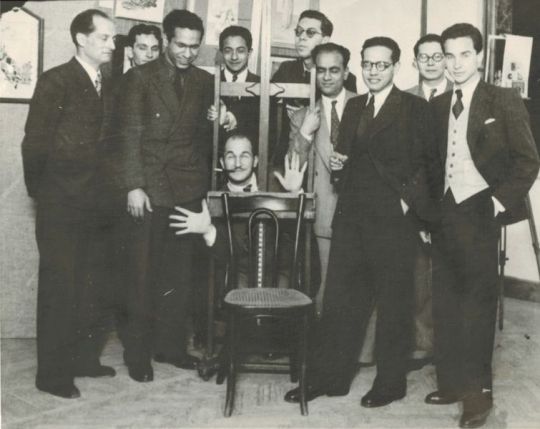
Art and Liberty, 1941. Front row left to right - Jean Moscatelli, Kamel el Telmissany, Angelo de Riz, Ramses Younan, Fouad Kamel. Back row left to right - Albert Cossery, unidentified, Georges Henein, Maurice Fahmy, Raoul Curiel, via u-in-u.com
The Emergence of Egyptian Surrealism
In a Cairo on the verge of World War II and under British colonial occupation by 140,000 troops, a rising Fascist ideology that debated values of democracy became a major preoccupation of artists and writers. “We find absurd, and deserving of total disdain, the religious, racist, and nationalist prejudices that make up the tyranny of certain individuals who, drunk on their own temporary omniscience, seek to subjugate the destiny of the work of art”, wrote 37 Egypt-based artists and writers in their 1938 manifesto Long Live Degenerate Art, marking a beginning of the Art et Liberté, an avant-garde movement that cannot be subsumed by the master narrative of the Western Surrealists.[1] Initially founded to protest the highly conservative annual Salon du Caire that classified artists according to nationality, they rejected the conflation of art with national sentiment and the notion of art for art’s sake, dismissed the popular aesthetic currents, ranging from Symbolism to Naturalism, and became globally engaged in its defiance of Fascism, nationalism, and Colonialism. Aligning themselves with Breton and Leon Trotsky’s 1938 manifesto For an Independent Revolutionary Art, they at the same time insisted that the movement had native roots in folk tales and crafts as well as in Coptic religious art. Providing a restless generation of creatives, intellectuals and political activists with a heterogeneous platform for cultural and political reform, Art et Liberté evolved its own definition of the movement, believing that its fundamental mission was “social and moral revolution”.
article continues: +
#Art and Liberty#1941#Jean Moscatelli#Kamel el Telmissany#Angelo de Riz#Ramses Younan#Fouad Kamel#Albert Cossery#?#Georges Henein#Maurice Fahmy#Raoul Curiel#Egyptian Surrealism#Surrealism
25 notes
·
View notes
Text
“ – Non vedo in cosa questo matrimonio sconvolgerebbe la nostra vita, disse Serag.
– Come fai a non capire! Questa donna può rovinarmi. Una donna vuole sempre vestiti, gioielli, e chissà cos’altro ancora! Un giorno può credersi posseduta dal demonio e voler organizzare una seduta d’esorcismo. Ci vedi a dormire in mezzo a tutte queste ballerine frenetiche?
Serag si mise a ridere. L’idea di Rafik lo divertiva come uno scherzo formidabile.
– Non ridere, disse Rafik, severo, è molto grave. Tuo padre può perdere sino al suo ultimo millesimo in quest’avventura. Forse saremo obbligati a lavorare!
– Ebbene! disse Serag, non chiedo di meglio.
– O idiota! Ti pentirai di queste parole.
– Te l’assicuro, Rafik, voglio lavorare.
– Vuoi lavorare! Mi domando come una tale idea abbia potuto germogliare in te. Sei probabilmente un mostro o un imbecille. In ogni caso, sicuramente non sei della famiglia.
– Voglio lavorare, disse Serag con accento disperato. E anche andarmene da questa casa.
– Sul mio onore! Sei un ingrato. Se non fossi mio fratello, ti avrei lasciato fare questa follia. Ma ho pietà di te. A proposito, a che punto sta la tua fabbrica?
– La fabbrica sta sempre allo stesso punto, rispose Serag. Sono stato a vederla di nuovo stamattina. È come se nessuno volesse finire di costruirla.
– Allora finiscila tu stesso, disse Rafik. Ecco un lavoro eccezionale. Di che ti lamenti?
– Mi prendi in giro, maledetto!
– Ascolta Serag, non ti prendo in giro. Cerco solo di allontanarti da una cattiva strada. Credimi, il lavoro non fa per te, né per nessuno di noi.
– Forse, disse Serag. Ma non posso piú continuare a vivere cosí.
– Sei giovane. Ho veramente pietà di te. Non sai ancora cosa sia una fabbrica.
– E tu, lo sai?
– Sí, disse Rafik. Quando studiavo per fare l’ingegnere, ci hanno fatto visitare delle fabbriche. Erano grandi edifici insalubri e tristi. Vi ho passato i momenti piú penosi della mia vita. Ho visto gli uomini che lavorano in quelle fabbriche; già non erano piú uomini. Tutti portavano l’infelicità impressa sul viso. Se ho abbandonato i miei studi, è unicamente per non essere a capo di una tale orda di moribondi.
A sentire questa evocazione lugubre, Serag rabbrividí.
Chiuse gli occhi; vedeva il suo romantico sogno di lavoro crollare, sprofondare nel dedalo di un dolore incommensurabile. Il lavoro dunque non poteva essere che dannazione e sofferenza. Serag taceva: era in preda a una sorda inquietudine. “
Albert Cossery, I fannulloni della valle fertile, traduzione e cura di Giuseppe A. Samonà, Einaudi (Collana Letture n° 69), 2016¹; pp. 59-61.
[1ª Edizione originale: Les Fainéants dans la vallée fertile (roman), Éditions Domat, Paris, 1948]
P.S.: Devo ringraziare per il piacere di questa lettura sorprendente @dorettaus, sempre attenta ed interessante nei suoi suggerimenti.
#Albert Cossery#I fannulloni della valle fertile#lettura#leggere#letteratura egiziana del XX secolo#narrativa araba#Il Cairo#scrittori mediorientali#Medio Oriente#ozio#narrativa#libri#letteratura araba del '900#inerzia#citazioni letterarie#pigrizia#Giuseppe A. Samonà#sonno#letargia#Egitto#medioriente#vita#indolenza#idealismo#brama#ambizione#avidità#lavoro#infelicità
11 notes
·
View notes
Text
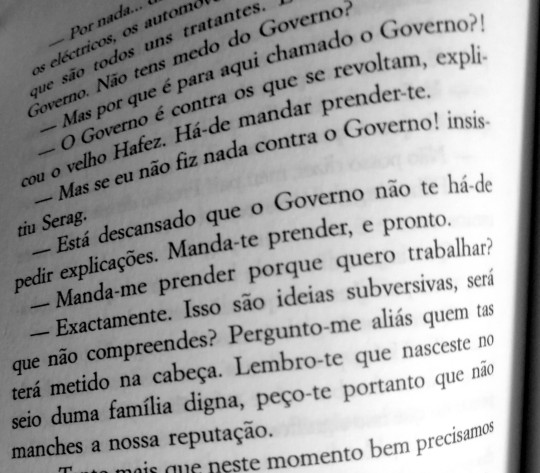
Mandriões No Vale Fértil, Albert COSSERY
0 notes
Text
Le progrès social commence toujours par l'indépendance des fesses....✨🤔😉
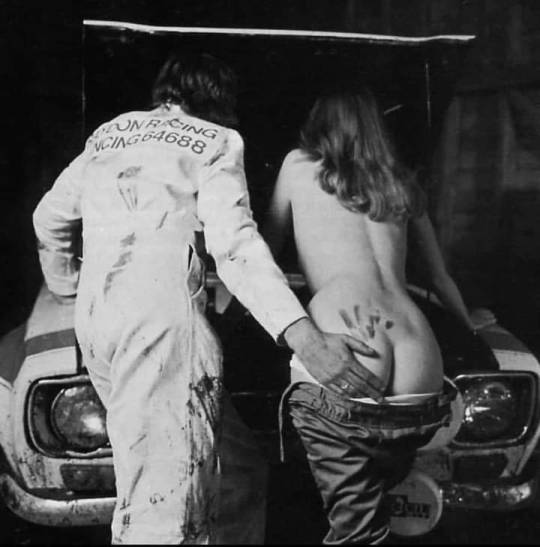
Le Complot des saltimbanques de Albert Cossery
21 notes
·
View notes
Text
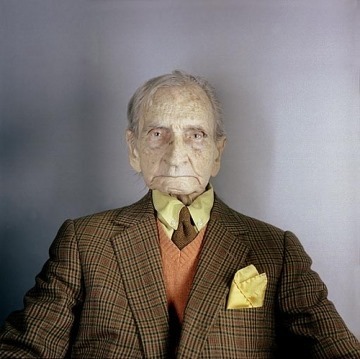
To the question: "Why do you write?", Albert Cossery answers: "So that someone who has just read me does not go to work the next day".
25 notes
·
View notes
Quote
Il faut aller chercher la vie en profondeur et ne pas se contenter des apparences. Avec de la patience et de l’amour, on y fait des trouvailles saisissantes.
Albert Cossery
12 notes
·
View notes
Video
youtube
[Format Court] Albert Cossery, l’aristocrate de la cloche - Les livres d...
0 notes
Text
ALBERT COSSERY/collective file
Laurent DOUCET
Professor David L. PARRIS
Irene FENOGLIO
Published in french in the issue number 5 of the French magazine
A littérature-action
Published in English in the second issue of the Room surrealist Magazine
ALBERT COSSERY
A PARADOXICAL ETHIC OF INSURRECTION
Laurent[1]DOUCET
Albert COSSERY and Lawrence DURRELL in 1968, © Claudine Brelet.
A writer’s name has long circulated under…
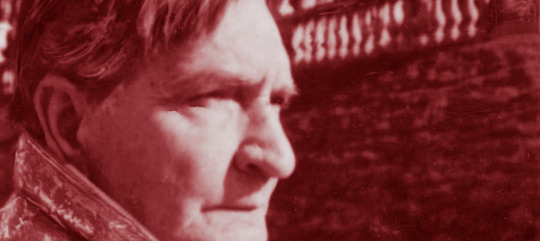
View On WordPress
1 note
·
View note
Link
In the same vein is Albert Cossery’s “The Colors of Infamy.” A very fast read, the book follows a well-mannered pickpocket and serves as a guide of sorts to the dynamics of the city’s ancient markets — the swindling, the bargaining, the haggling for a deal. Once you set foot in the Khan el-Khalili bazaar, or even onto the pyramids plateau in Giza, where you will be swarmed with offers for camel rides, horse rides and guides, you may appreciate having read this book.What books or authors should I bring along with me?Cairo is characterized in large part by its layers of architecture — Fatimid, Mamluk, Khedival. But it also has a rich history of modern architecture, from turn-of-the-century revivalism to concrete expressionism and modernist design. This includes the houses of iconic cultural figures. The house of the singer Oum Kulthoum has been demolished, but similar homes by the same architect, Ali Labib Gabr, still stand in the vicinity, including what was once my grandmother’s house, just a few blocks away. This is not a novel, but Mohamed Elshahed’s “Cairo Since 1900: An Architectural Guide” offers a brilliant guide to this modern age and makes for a perfect walking-tour companion, speaking not only of the buildings and their historic significance but also of that era.In fiction, Waguih Ghali’s “Beer in the Snooker Club” is a cult classic originally written in English that depicts post-colonial Cairo through the eyes of a nationalist, Anglophone aristocrat grappling with a regime change and new socialist policies under President Gamal Abdel Nasser. Although it was written in 1964, it also tells the story of Egypt now.At the other end of the class and experiential spectrum during that same political regime is Sonallah Ibrahim’s experimental novel “That Smell.” Published in 1968, it tells the story of a recently released prisoner and his malaise as he struggles, and fails, to readjust to everyday life on the outside. There are many days in this fast-changing city that feel like this novel to me.If I have no time for day trips, what books could take me farther afield instead?André Aciman’s essay collection “False Papers,” for a journey to Alexandria. Born and raised there, Aciman returns decades after his family left for exile and tries to retrace the city as it existed in his memory. He finds little of it left, but his search captures in vivid detail the city as it is best remembered. His pensive book moves across time and geography, from Egypt to Europe, but, even there, it is still about Aciman’s Alexandria. To hold on to that sentiment — the looking and the loss — you should then read Constantine P. Cavafy’s “Collected Poems.” The two writers, both born in the ancient port city, form an unofficial Alexandrian compendium.Yasmine El Rashidi’s Cairo Reading ListNovels by Naguib Mahfouz“In the Eye of the Sun” and “The Map of Love,” Ahdaf Soueif“Slipping,” Mohamed Kheir“Cairo: City of Sand,” Maria Golia“The Colors of Infamy,” Albert Cossery“Cairo Since 1900: An Architectural Guide,” Mohamed Elshahed“Beer in the Snooker Club,” Waguih Ghali“That Smell,” Sonallah Ibrahim“False Papers,” André Aciman“Collected Poems,” Constantine P. Cavafy Source
0 notes
Link
In the same vein is Albert Cossery’s “The Colors of Infamy.” A very fast read, the book follows a well-mannered pickpocket and serves as a guide of sorts to the dynamics of the city’s ancient markets — the swindling, the bargaining, the haggling for a deal. Once you set foot in the Khan el-Khalili bazaar, or even onto the pyramids plateau in Giza, where you will be swarmed with offers for camel rides, horse rides and guides, you may appreciate having read this book.What books or authors should I bring along with me?Cairo is characterized in large part by its layers of architecture — Fatimid, Mamluk, Khedival. But it also has a rich history of modern architecture, from turn-of-the-century revivalism to concrete expressionism and modernist design. This includes the houses of iconic cultural figures. The house of the singer Oum Kulthoum has been demolished, but similar homes by the same architect, Ali Labib Gabr, still stand in the vicinity, including what was once my grandmother’s house, just a few blocks away. This is not a novel, but Mohamed Elshahed’s “Cairo Since 1900: An Architectural Guide” offers a brilliant guide to this modern age and makes for a perfect walking-tour companion, speaking not only of the buildings and their historic significance but also of that era.In fiction, Waguih Ghali’s “Beer in the Snooker Club” is a cult classic originally written in English that depicts post-colonial Cairo through the eyes of a nationalist, Anglophone aristocrat grappling with a regime change and new socialist policies under President Gamal Abdel Nasser. Although it was written in 1964, it also tells the story of Egypt now.At the other end of the class and experiential spectrum during that same political regime is Sonallah Ibrahim’s experimental novel “That Smell.” Published in 1968, it tells the story of a recently released prisoner and his malaise as he struggles, and fails, to readjust to everyday life on the outside. There are many days in this fast-changing city that feel like this novel to me.If I have no time for day trips, what books could take me farther afield instead?André Aciman’s essay collection “False Papers,” for a journey to Alexandria. Born and raised there, Aciman returns decades after his family left for exile and tries to retrace the city as it existed in his memory. He finds little of it left, but his search captures in vivid detail the city as it is best remembered. His pensive book moves across time and geography, from Egypt to Europe, but, even there, it is still about Aciman’s Alexandria. To hold on to that sentiment — the looking and the loss — you should then read Constantine P. Cavafy’s “Collected Poems.” The two writers, both born in the ancient port city, form an unofficial Alexandrian compendium.Yasmine El Rashidi’s Cairo Reading ListNovels by Naguib Mahfouz“In the Eye of the Sun” and “The Map of Love,” Ahdaf Soueif“Slipping,” Mohamed Kheir“Cairo: City of Sand,” Maria Golia“The Colors of Infamy,” Albert Cossery“Cairo Since 1900: An Architectural Guide,” Mohamed Elshahed“Beer in the Snooker Club,” Waguih Ghali“That Smell,” Sonallah Ibrahim“False Papers,” André Aciman“Collected Poems,” Constantine P. Cavafy Source
0 notes
Photo
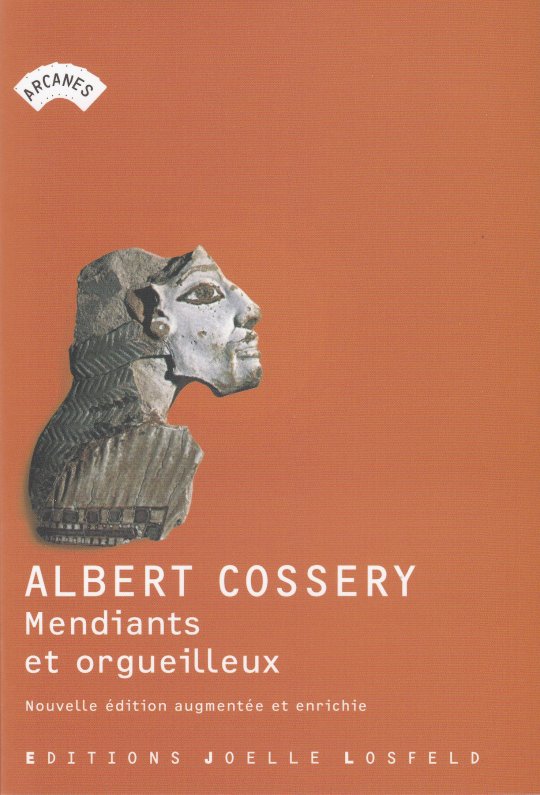
a beggar who sets his/her own conditions
24 notes
·
View notes
Text
Le Globe était un café assez prétentieux, situé non loin de la corniche, dans une des rues les plus élégantes du quartier européen. Il était renommé pour sa terrasse devant laquelle se déroulait sans discontinuer la plus sensationnelle exhibition de jolies filles. La plupart des consommateurs — on pourrait dire presque tous — passaient leur temps à expertiser d’un œil concupiscent la variété des formes féminines défilant sur le trottoir à un rythme vertigineux. Les robes légères que portaient généralement ces divines créatures rendaient leur tâche aisée et captivante. Certains clients — et non des plus jeunes — restaient attablés une journée entière, dans l’espoir d’observer de près le galbe pur d’une belle jambe ou le mystère ondoyant d’une croupe anonyme. À vrai dire, l’intérêt que prenaient les filles à cette passionnante observation de leurs charmes n’était pas moindre ; on racontait que parmi elles, il se trouvait quelques vicieuses qui sortaient tout exprès sans culotte pour le malin plaisir d’exciter plus fortement les malheureux voyeurs. Aussi la terrasse du Globe ne désemplissait-elle jamais ; sauf aux heures caniculaires de l’après-midi, car ces demoiselles, selon l’usage, se livraient à la sieste. Quant à l’intérieur, il était presque toujours vide ; on y voyait parfois deux ou trois vieillards, en instance de départ vers l’au-delà, s’intéresser d’une manière abstraite à une partie de dominos dont le résultat risquait d’être posthume. De temps en temps, attirés malgré eux par les exclamations admiratives des clients de la terrasse, ils lançaient à travers la baie vitrée un regard éteint sur l’objet de tant de convoitise ; puis, défaillants d’émotion, ils retombaient dans leur jeu sénile.
— Albert Cossery, La Violence et la Dérision
3 notes
·
View notes
Text
«Je ne peux pas écrire une phrase qui ne contienne pas une dose de rébellion. Sinon elle ne m'intéresse pas. »
Albert Cossery
7 notes
·
View notes
